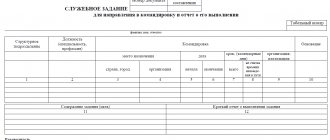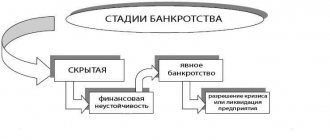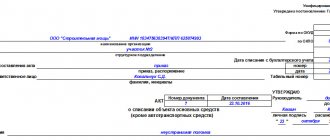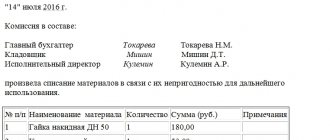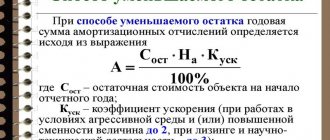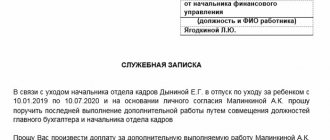The concept of "internal investigation"
An official investigation is a unique set of measures used to collect, analyze and verify information about misconduct in order to identify the employee’s guilt, and sometimes to identify the guilty person if this is not immediately known.
According to Art. 21–22 of the Labor Code of the Russian Federation, when signing an employment contract, the parties acquire rights and obligations. The employer has the right to hold the employee accountable for violations. But first it is necessary to establish that it was he who committed the offense and that his guilt is really present.
Common violations subject to investigation:
• violation of labor discipline regulations;
• failure to perform a labor function;
• violation of official duties according to instructions;
• failure to comply with safety regulations;
• causing material damage.
This list is not closed; in practice, any other situation may arise in which an internal investigation will be required.
When a violation has revealed the fact of a crime, for example, theft, upon completion of the official investigation, the manager can additionally report it to law enforcement agencies.
The verification and study of materials is accompanied by the preparation of special documentation so that the employer subsequently has the opportunity to defend his case.
In what cases is an internal investigation carried out?
In general, an unpleasant situation of an internal investigation can be initiated by an employer at the slightest suspicion of any deviation. Most often, internal investigations arise in the following cases deviating from normal operation:
- During the scheduled inventory, shortages were identified. Actions will be taken to find out the reasons.
- When receiving requests from employees or regular clients of the organization. These may also be constant complaints from any category of customers.
- Violation of accepted rules by one or a group of employees. These may be standards prescribed in employment contracts or job descriptions. For example, absenteeism is the absence of an employee from work during working hours for more than 4 hours.
- Employees going beyond the boundaries outlined by local regulations, for example, fire safety regulations.
- In the case when information fundamentally important for doing business somehow got to competing organizations.
- Moral or material harm was caused to individual employees or the company as a whole.
- The fact of receiving and giving a bribe was established.
Naturally, these are not all the reasons prompting an investigation. But most cases fit into them. Some of the situations are described in detail in existing legislation. For example, Article 247 of the Labor Code is devoted to the actions of the employer if he has suffered damage.
Internal investigation under the Labor Code: algorithm
Procedure for carrying out an investigation:
1. Creation of a commission and issuance of an order. Usually the commission consists of at least 3 people: for example, a lawyer, an economist and a personnel worker.
2. Direct work of the commission with studying all sides of the case, collecting evidence, interviewing witnesses, etc.
3. If the guilty employee is known, he writes an explanatory note.
4. Preparation of an investigation report and its signing by all participants in the proceedings.
During the investigation, mandatory points are established, without which recovery of damages is impossible:
- whether actual damage was caused and in what amount,
- existence of financial liability under Article 239 of the Labor Code of the Russian Federation,
- the presence of guilty actions or inaction of the employee,
- the presence of a connection between the actions (inaction) of the employee and the consequences that occur.
In fact, an internal investigation is a direct procedure for studying case materials that prove the guilt of the offender.
Without which it is impossible to draw up an official investigation report
One of the prerequisites for the legality of actions taken by the employer is the creation of a commission. The experience and education of the commission members must be sufficient to make any sound and fair decision on the issue under consideration.
In addition, the commission must consist of at least three people. But none of them, directly or indirectly, should be the culprit. For example, if an internal investigation is being conducted into a shortage, then an accountant cannot be included in it.
In order for his actions to have legal force, the employer must issue a separate order in which this commission is convened. Its chairman is also appointed.
Order to conduct an internal investigation: sample
There is no standard sample order for an internal investigation against an employee. It can be compiled in a convenient form. It must include the following mandatory items:
• name of the company and its legal form;
• brief description – “conducting an internal investigation”;
• description of the circumstances that require an internal investigation at the enterprise;
• composition of the commission;
• period of investigation;
• signature of the manager;
• date of.
The order to conduct an internal investigation is printed on the company’s letterhead. All interested parties must familiarize themselves with it and sign it.
Sample order for internal investigation
Who is conducting the investigation?
Large organizations usually have security services that are responsible for conducting internal investigations. In addition, the internal audit service can also conduct an investigation. If the company is not large, then this function is assigned to the personnel department.
For the objectivity of the investigation, it is necessary to create a special commission of at least 3 people . If the employee is a member of a union, a representative will be required to participate in the investigation process. But this does not mean that he should be a member of the investigation commission, since it is important to prevent the members of the commission from having a biased attitude towards the person being investigated. The commission usually includes company employees. But you can also involve third-party specialists, for example, auditors, appraisers, etc.
Important! Participation in the commission for conducting an internal investigation is voluntary. An employee has the right to refuse to participate if, for example, he has personal reasons for this.
Act on conducting an internal investigation: sample
Regulatory acts do not establish a specific sample of an official investigation report. However, it must contain the required information:
• name, date and place of drawing up of the document;
• composition of the commission;
• information about the person about whom the inspection was carried out;
• designation of the purpose of the investigation;
• circumstances identified during the inspection;
• decision on the guilt or innocence of the employee.
Additionally, the official investigation report contains an inventory of documentary evidence requested and received during the investigation. At the end of the document, the signatures of the commission, the guilty person and the date of his familiarization with the act are placed.
A properly conducted investigation will allow the organization to protect its rights in the event of the possible appeal of the employee guilty of misconduct to a higher authority.
Sample of an official investigation report
Deadlines
In total, no more than one month is allocated for the investigation. If the investigation is delayed, this will be a direct violation of Article 192 of the Labor Code. Except in cases where the main accused is on vacation or does not attend work due to illness. But even such delays are finite. Their maximum period is 6 months.
Some parts of the content of the official investigation report can be changed by the compiler at his own discretion, since the exact type of this paper is not centrally fixed. The main thing is that the document form is included in the accounting policy of the enterprise, meets its functionality and requirements for the preparation of official documents.
Procedure and rules
Prosecution for damage to corporate property or other violations is associated with the restriction of the rights of the violator, therefore, special attention should be paid to the procedure for organizing an internal audit.
Preparing an order to organize an official investigation is a right, not an obligation. Therefore, the manager independently decides whether it is advisable to punish a specific person for the identified offense.
Labor law provides for the following procedure:
- Identification of violation. Any official of the enterprise who prepares a memo to the head of the company can establish the fact of misconduct. Along with the report, an Act on the identified misconduct is submitted, which is signed by at least three employees of the organization.
- Based on the received message, the chief prepares and issues an Order to conduct an internal investigation. The document indicates the responsible persons, the timing of the inspection and the list of activities.
- Within 24 hours, a special commission is formed that considers the circumstances of the offense and its consequences for the proceedings.
- Obtaining an explanation from the employee. The employee may refuse to provide explanations. In this case, an Act is drawn up, which states that the employee does not want to justify his actions in writing or orally.
- Organization of a commission meeting at which the final decision on prosecution is made. It is mandatory to take into account the opinions of all participants.
The completed decision is sent to the manager for review and receipt of a resolution to implement the penalty.
Rules for forming a commission
In total, there must be at least three members of the commission who are not interested in making a specific decision on the dispute. Includes:
- firm lawyer;
- Security Council representative;
- accountant;
- two ordinary employees.
The chief can also be a member, but this is not a mandatory condition.
Recording the results
The decision is formalized in two documents. Namely:
- Conclusion of the commission meeting (contains a detailed description of the identified circumstances, the amount of damage caused, the perpetrators, the consequences of the offense for the enterprise);
- Order on the application of disciplinary measures.
The first document is drawn up by the convened commission and signed by all its participants. The second is prepared by the secretary of the head of the company on behalf of the boss. The manager signs the Order and submits its original for registration in a special Journal. After this, the paper is sent to the personnel department to enter information into the personal file.
If the punishment is associated with monetary encumbrances, then another original order is sent to the company’s accounting department.
The application of disciplinary liability standards does not exclude the additional application of administrative, criminal or civil sanctions.
Time frame for the investigation
As noted above, it is possible to bring the guilty person to justice only for a limited time. Thus, the employer is authorized to issue such orders no later than four months after the commission of the offense.
Interestingly, the employee himself can file a complaint against illegal actions of management only within 30 days.
This difference is due to the fact that violations by employees cannot always be identified in a timely manner, and therefore it is possible to hold accountable even those persons whose contract has long been terminated.
The deadlines may be extended if during this period the potentially guilty person was on vacation or sick leave. Inspection in absentia is not permitted.
Conclusions about the inspection
During the inspection, the fact of violation of the internal regulations of the enterprise is either confirmed or refuted.
There is no legally established form for the results of an internal audit; however, certain points are identified that must be reflected in the document.
These points are:
- Information about the committed act that served as a violation, indicating the date and time of its occurrence.
- Composition of the commission, time and methods of its work.
- An indication of the documents that were reviewed during the inspection, as well as all witness statements.
- The guilt or innocence of a particular person in the violation that occurred and the penalties taken.
Conventionally, these points are collected into several parts. Typically these are introductory, descriptive and resolution parts. Also, the results of the audit are usually accompanied by all documents that influenced the progress of the audit.
If the audit reveals not only a violation of internal regulations on the part of one of the employees, which caused material damage to the enterprise, but also traces of a criminal offense, the employer can involve the competent authorities to open a case against the employee.

